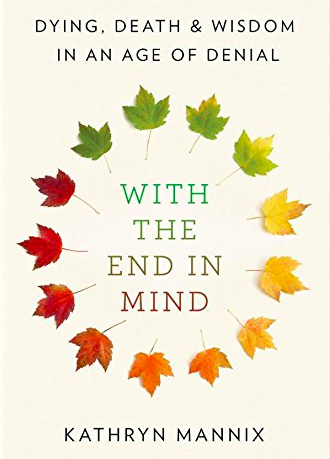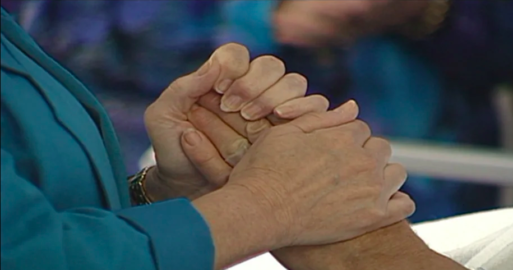
“What to Expect When You’re Expecting” has been a perennial New York Times bestseller for the past 25 years, educating parents-to-be about pregnancy and birth. But no widely read book has yet to prepare us for what to expect when we are dying.
Kathryn Mannix’s 2018 book “With the End in Mind” attempts to fill that void. In it, Mannix, a British physician who specializes in palliative care, addresses the need to understand the process of natural death. It is an extraordinary collection of ordinary end-of-life narratives that she has witnessed and participated in for over 30 years.
Few of us have the opportunity to sit by many deathbeds as a living body takes its final breath. Instead, our views are skewed by the frequent cues we take in from vicarious experiences: television, films, novels, social media and the news. “These sensationalised yet simultaneously trivialised versions of dying and death have replaced what was once everyone’s common experience of observing the dying of people around them, of seeing death often enough to recognize its patterns, to become familiar with life lived well within the limits of decreasing vigour, and even to develop a familiarity with the sequences of the deathbed,” writes Mannix, who uses characteristic British spelling and colloquialisms throughout her collection. Some of her across-the-pond observations can be attributed to the fact that care facilities and specific treatments provided in the United Kingdom are different than those in the United States. Nonetheless, the personal stories of patients and their families will ring true in any culture.

Kathyrn Mannix, author of “With the End in Mind”
Credit: David Irwin on Facebook
“With the End in Mind” is not a handbook on grieving. It focuses on what comes before the grieving — the acknowledgment of and preparation for death. Mannix convinces the reader how graceful and meaningful that final bow can be.
As a “death-wife” — a home consultant who assists through stages of dying the way a midwife assists at a birth — Mannix compassionately intervenes with one family after another at one of their most challenging times. One especially poignant narrative involves Joe and Nelly, married 50 years, with Nelly near death. When Mannix talks to Joe, he insists she not use the word cancer or talk about death in front of Nelly because, he says, Nelly thinks she has a curable condition. When Mannix speaks privately with Nelly, the dying woman pleads with Mannix not tell Joe that her illness is terminal. Mannix gently facilitates a conversation between the husband and wife.
“So it seems to me that, although Nelly is the person who is ill, both of you are suffering from this illness. And each of you is suffering alone. Nelly is upstairs, worrying about Joe. And Joe is downstairs, worrying about Nelly…I wonder whether you might bear the suffering better if you could talk about what is going on.”
Nelly starts. “I’m dying, Joe, and we both know I am.”
Joe reacts. “Shush, Nell, no! We can beat this!” he sobs.
Nelly replies, “Joe, it’s cancer. They told me in the hospital. I just didn’t know how to tell you.”
“You knew?” he asks, “You knew all the time?”
“I did, pet,” she says, and pulls her hands to his lips and weeps.
Mannix takes a tea tray from the room, explaining to the reader, “They don’t need me in there. I will find my way to the tiny kitchen to fill the whistling kettle, and brew up some tea-with-sympathy, as I learned to do long ago.”

Of course, each story Mannix shares in “With the End in Mind” is different. Her suggestion that Joe and Nelly own up to their misperceptions so that they may share their last goodbyes doesn’t rule out her accepting “denial” as a strategy in another near-death situation.
According to Mannix, the process of experiencing a natural death, in which a body goes through a peaceful pattern of shutting down, has been “hijacked” since the second half of the 20th century when the development of many medical procedures made, if not a cure, at least postponement of dying, possible. She argues that technology has added a “new deathbed ritual that is a triumph of denial over experience.”
More often these days, she writes, people die “in ambulances and emergency rooms and intensive care units…separated from us by the machinery of life preservation.” This leaves most of us unfamiliar with a natural death process and uncomfortable with even talking about it or knowing how to act when a loved one is near death.
By showing instead of telling, Mannix”s “With the End in Mind” becomes a multi-layered argument for consultant-delivered palliative care, a practice more available in her native United Kingdom than other countries. A review of the book in the Irish Times concedes, “The vast majority of the world population do not have access to palliative care and 80 percent of the world’s population, including five million people with terminal cancer, does not have access to adequate pain relief.” Although the reader could very well be saddened by reading one death-bed story after the other in Mannix’s book, sharing the stories over time and through college classrooms, medical schools, and the health care community could contribute to making the last days of our lives more humane and meaningful than any of the latest advances in medicine.

 “With the End in Mind” by Kathryn Mannix
“With the End in Mind” by Kathryn Mannix


 First the Wealth Gap, Now the U.S. Has a Growing Health Gap
First the Wealth Gap, Now the U.S. Has a Growing Health Gap
 How to Comfort A Dying Loved One
How to Comfort A Dying Loved One
 Our Annual Seven Holiday Gifts for Someone Who Is Grieving, 2024 Edition
Our Annual Seven Holiday Gifts for Someone Who Is Grieving, 2024 Edition














